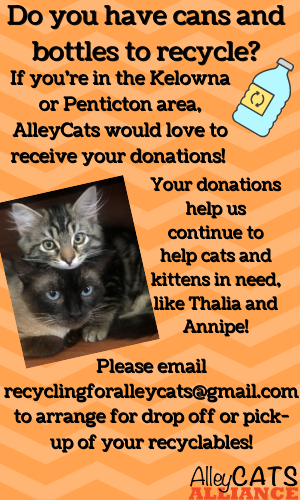Top Reasons to Keep Cats Indoors
Many cat lovers are now savvy that indoor cats are safer cats, while others still think that cats deserve the freedom to run in the great outdoors. When humans domesticated cats, we took on the responsibility for their health and welfare. Part of that responsibility is to keep cats safe and in good health. For those holdouts for letting cats roam free, consider these top reasons to keep cats indoors.
To Monitor Your Cat’s Urinary Tract/Bowel Health
If you have no litter boxes in the house, you cannot monitor painful attempts to urinate that would be a red flag warning of a potential UTI or urinary tract blockage. Observing a cat’s painful attempts to poop, or finding blood and/or mucus in the faeces in the fact is a red flag for constipation, bowel blockage, or megacolon.
An Indoor Cat Is Relatively Safe from Many Diseases
Cats allowed free access to the outdoors invariably come into contact with other cats. Even casual contact can transmit parasites and more serious diseases:
• FeLV (Feline Leukemia)
• FIP (Feline Infectious Peritonitis)
• Panleukopenia(Feline Distemper)
• FIV (Feline Immunodeficiency Virus)
• Zoonotic Diseases
Mice your cat may eat or bring home can also cause a host of other dangerous diseases.
Rarely mentioned, but equally serious is the possibility of skin cancer from over-exposure to the sun. White and other light-coloured cats can develop squamous cell carcinoma, a serious, painful disease.
Indoor Cats Do Not Get Hit by Cars
According to one source, more cats are killed by cars annually than are euthanized in U.S. animal shelters. Even the most careful driver cannot avoid hitting a cat that runs across the street in front of a car. Even so-called “safe” country areas are no guarantee for cats. Country cats are not as car-savvy as their city brethren, and all it takes is one misjudgement of distance or speed.
Indoor Cats Are Safe From Predators and Dog Packs
Outdoor cats are below predators in the food chain, and they are sitting ducks for owls, raptors, coyotes, and native big cats. Dogs running in packs will consider a cat fair game; even one large dog can easily overpower and kill a cat. Remember that some dogs are also bred to attack; they are not really to blame when their instinct takes over. Even with a full set of fangs and claws, the cat rarely has a chance when caught outside, and declawed cats are even more at risk.
Indoor Cats Don’t Create Neighbor Problems
Even “well-bred” cats will venture into neighbours’ yards when allowed to roam free, and the resultant neighbourhood discord has in some cases caused cat owners to move. People who don’t like cats will not tolerate cats using their gardens as litter boxes, and will sometimes resort to extreme measures to keep the cats out. At the very least, a neighbour may call the local animal control to pick up the “stray” cat.
Indoor Cats Rarely Get Abscesses From Fighting
Cats are very territorial and will defend their territory to the death if challenged by another cat. At the very least, these territorial battles often result in abscessed wounds, which can be deadly if not treated in time. There’s also the chance, of course, of cats contracting FIV from deep bite wounds, as was the occasion with my Shannon. Shannon’s illness and subsequent death was the primary reason I changed my stance on the indoor-outdoor debate several years ago.
Indoor Cats Are Safe From Human Abuse
Freely-roaming cats are easy targets for gangs of youths with time on their hands, for cat-haters, who seek cats out for target practice, and for neighbours who would think nothing of killing a cat for trespassing on their property. Although animal protection laws are beefing up, a prosecution will never bring a loved cat back to life. It’s a well-known fact that serial killers often practice first with animals.
Indoor Cats Can Get Plenty of Exercise
Cats do get exercise, but they can get it safely with interactive toys, climbing towers, scratching posts, and other indoor toys; all much safer than running from dogs or fighting with other cats. Remember also that there are safe compromises for the outdoor experience.
Indoor Cats Are not a Danger to Wildlife
Let’s face it; cats are predators, and left to their own devices outdoors, will eventually chase and kill birds, rabbits, and other small wildlife. Most of us would rather not see our cats cast in a killer role, and keeping them indoors will help protect wildlife to some degree.
Indoor Cats Don’t Get Lost
As outdoor cats widen their outdoor territories, they may become lost long enough to be “rescued” by other cat lovers, legitimate rescue groups, or picked up by animal control as strays. Statistics show that of “owned” cats turned in to shelters, only three percent are eventually relocated with their owners. Collars can break, and even microchips do not guarantee a cat will not be adopted and kept as an indoor cat by someone else. Why take the chance?
Indoor Cats Are Not Stolen
Bunchers are people who sell cats to laboratories for animal experimentation or research. Their prime source of cats is on the street. Even a cat sitting on his front lawn is fair game for a buncher. Other people pick up cats for use as “bait” for training fighting dogs. Both categories of cat-nappers are the lowest of the low, but they are out there.
So beware. Remember that an indoor cat is always safer.


